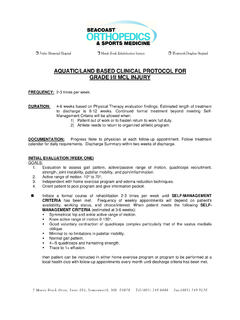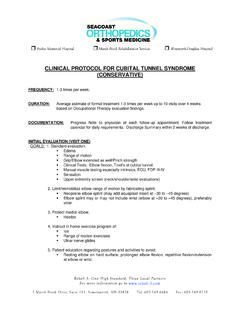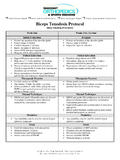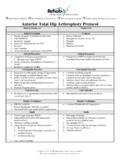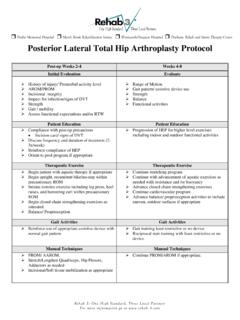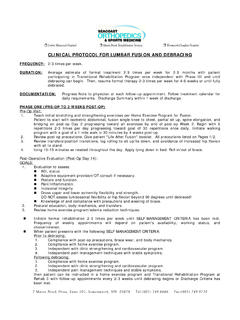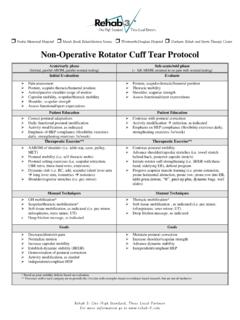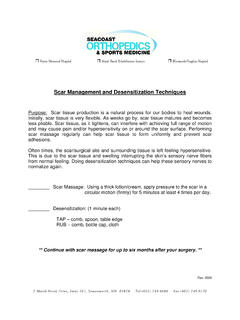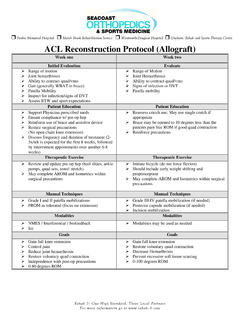Transcription of Acute Patella Dislocation Protocol - SOS Med
1 Frisbie Memorial Hospital Marsh Brook Rehabilitation Service Wentworth-Douglass Hospital Durham: Rehab and Sports Therapy Center R e h a b 3 : O n e H i g h S t a n d a r d , T h r e e L o c a l P a r t n e r s F o r m o r e i n f o r m a t i o n g o t o w w w . r e h a b-3 . c o m Acute Patella Dislocation Protocol Week one Weeks two to four Initial Evaluation Evaluate Range of motion Ability to contract quad/vmo Pain/Joint effusion Assess RTW and functional expectations Gait is typically WBAT with crutches in apatellofemoral stabilizing brace Evaluation of patients with Dislocation episodesshould include a thorough biomechanical assessment Range of Motion Pain/Joint effusion Ability to contract quad/vmo Patella mobility Standing balancePatient Education Patient Education Support Physician prescribed meds Reinforce use of brace and assistive device ifapplicable (Typically WBAT with Patella stabilizingbrace/ immobilizer depending on severity)
2 Discuss frequency and duration of treatment 2-3 timesper week for 6-8 weeks Reinforce use of stabilizing brace Wean from crutches if good quad control andnormal gait pattern without painTherapeutic Exercise Therapeutic Exercise May complete pain free AROM and Isometrics withmindset of reducing effusion and restoring quadcontraction Heel slides, quad sets, ankle pumps, and leg raises NMES is recommended for quad activities Initiate bicycle (do not force flexion) Initiate isotonic exercise in pain free ROM includingwallslide, multi hip, leg press, hamstring curl, partialsquat and step up. Proper form is critical includingavoidance of medial column collapse (ContinuedNMES with quad activities is recommended) Add single leg static balance activity Initiate multi-angle isometrics with NMESM anual Techniques Manual Techniques Avoid Patella mobilization (typically hypermobile) PROM as tolerated (focus on extension) Avoid Patella mobilization (typically hypermobile)
3 Consider McConnell taping as an adjunct to bracingand quad re-education Modalities NMES is recommended for quad activity Other modalities may be used as needed for reductionof effusion and pain relief NMES is recommended for quad activity Other modalities may be used as needed forreduction of effusion and pain reliefGoals Goals Control pain Reduce effusion Restore voluntary quad contraction 0-70 degrees ROM Restore voluntary quad contraction 0-90 degrees ROM Minimal / 1+effusion FWB gait with Patella stabilizing brace Frisbie Memorial Hospital Marsh Brook Rehabilitation Service Wentworth-Douglass Hospital Durham: Rehab and Sports Therapy Center R e h a b 3 : O n e H i g h S t a n d a r d , T h r e e L o c a l P a r t n e r s F o r m o r e i n f o r m a t i o n g o t o w w w.
4 R e h a b-3 . c o m Weeks four to eight Weeks eight to discharge Evaluate Evaluate Gait and brace needs Quad Contraction ROM Balance Patella mobility / crepitus Any excessive joint laxity Isokinetic Strength test and/or Functional MovmentScreen based on physicians preference Address any deficits that may limit return to work orsport goals HEP compliancePatient Education May wean from braceTherapeutic Exercise Therapeutic Exercise Progress to squatting, lunging, step-up activitiesas appropriate Single leg isotonic exercises Single leg dynamic balance activity Progress to closed chain exercises in multipleplanes and on unstable surfaces Include abdominal and glut strengthening, typicalemphasis is prevention of medial columncollapse Encourage participation in the CFA Cardiovascular training (bike, swim and elliptical) Begin agility and sport specific activity withphysician approval Return to running (12 weeks post-op) with physicianapproval Return to sport (12 weeks post-op) with physicianapprovalManual Techniques Any techniques as neededModalities Any as IndicatedGoals Goals 4+/5 strength with manual testing No effusion No noteable deficits with Functional MovementScreen Normal ROM and gait without assistive device No pain with ADL s Full strength with manual testing Discharge with full return to work or sport activityorders

